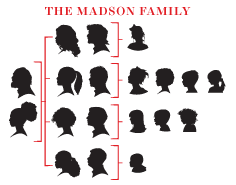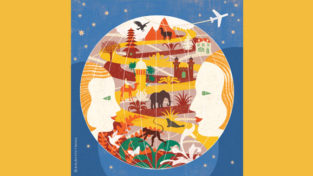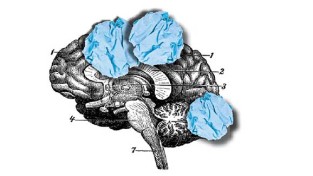The Maven: Telling Your Family’s Story
 With the advent of genealogy-focused television programs such as TLC’s Who Do You Think You Are?, The Genealogy Roadshow, and Henry Louis Gates’s African American Lives series on PBS, genealogy is reaching a much broader audience than ever before. Online family trees have proliferated, and online genealogy services are popping up and adding content every day. Why the new wave of interest? In our increasingly mobile and virtually connected world, people are seeking ways to feel rooted to something a little less fleeting, a little more permanent—home, history, and personal identity. Here is how you can get started researching your family’s ancestry:
With the advent of genealogy-focused television programs such as TLC’s Who Do You Think You Are?, The Genealogy Roadshow, and Henry Louis Gates’s African American Lives series on PBS, genealogy is reaching a much broader audience than ever before. Online family trees have proliferated, and online genealogy services are popping up and adding content every day. Why the new wave of interest? In our increasingly mobile and virtually connected world, people are seeking ways to feel rooted to something a little less fleeting, a little more permanent—home, history, and personal identity. Here is how you can get started researching your family’s ancestry:
Start Close to Home
That box of papers you inherited from your grandmother. Photo albums and scrapbooks on your parents’ shelves. Your own filing cabinet. Gather as much information as you can from resources you already have at your fingertips. Birth and marriage certificates, military papers, family Bibles, newspaper clippings, yearbooks—all of these records found at home are rich sources of genealogical information. Your local public and university libraries can also be a good place to start.
Get Organized
Once you’ve collected some basic family information, use a free, online family-tree service like Geni.com or Ancestry.com to assemble your data in one easy-to-use place. Start with skeletal information like dates of births, marriages, and deaths. Take stock of the information you’re missing. Don’t forget to interview living family members for stories and information you might not know.
Locate Records Online
No matter where in the world your research is focused, FamilySearch (familysearch.org) is the best place to start, with millions of records and hundreds of research guides and tutorials, all available at no cost. Another good free resource is Cyndi’s List (cyndislist.com), a directory of hundreds of thousands of genealogy websites, catalogued by topic and geographic area. If you’re ready to invest in a subscription service, Ancestry.com (ancestry.com) is one of the best sources of genealogical research material. You can also check regional or state archives for digital collections; many local archives have vital records certificates and other records available online.
Tell a Story
Names and dates are key components of successful genealogical research, but by themselves they reveal little about an individual’s life. Use federal census records (available at familysearch.org) to construct a family timeline in ten-year snapshots. Take note of details on occupation, income, veteran status, and citizenship as well as street addresses, neighborhoods, and even neighbors’ data. A marriage record tells about the marriage between two people, but it also offers details about their parents, their religion, even their friends. (Usually a marriage has a witness—who witnessed your grandparents’ marriage?) Compare dates with major historical events—which wars, financial depressions, or political upheavals did your ancestors experience? Read up on their communities’ local histories. What events and circumstances framed their lives? Newspaper articles and even court cases can add texture to ancestors’ stories. Teasing out the not-so-obvious details in the records you find is what can help you to reconstruct your ancestors’ lives, and this, ultimately, is how you can begin to relate to them and the lives they led.
—By Eva Goodwin ’08

Eva Goodwin ’08 is a professional genealogist in Oakland, California, and founder of Family Archeologies (familyarcheologies.com), a family history research firm. She is a member of the National Genealogical Society, the New England Historical & Genealogical Society, and the California Genealogical Society, and she serves on several committees and working groups of the Association of Professional Genealogists, including the Young Genealogists Working Group. Her areas of special expertise include California, New England, the Mid-Atlantic, and Nova Scotia, and her professional aim is to make genealogy accessible and relevant to younger generations.
Are you a maven?
Pitch us your area of expertise at quarterly@mtholyoke.edu.
This article appeared in the spring 2014 issue of the Alumnae Quarterly.
April 17, 2014










In 2007, when my first son married, I decided that it was time to gather some ORAL “data” but mainly stories about the ʻohana (Hawaiian for 1. clan, 2. family or the reverse) TOLD BY THEMSELVES, each of his/her of their own line/lines of descent, which I strung together, as the material arrived, and published (Kamaluʻuluplele) not for profit but for family and a few select research libraries. Now, almost entering 2016 but likely to pour into 2016-17, an originally 16 volume set has been largely published (short four) and several more that are Epilogue and Appendix volumes (e.g. family living abroad, in education, family and historical institutions, relationships by marriage). They were drawn up to explain by example all the varied kinds of information and qualities of telling that can be presented with photos, lists, photographed proofs of accomplished works (e.g. copies of drawings, of music score (parts), of poems, of childrenʻs “first books” [handmade]) and even public accounts that influenced the qualities of life for individuals at critical historical points of cultural change/critical cultural points historical change. The total volumes should be 21, privately printed, in 20 copies only. But each line of descent was to feel free to peel off its own part(s) and those related and make their own accounts. The project became comprehensive because of the size of the descending stream. The Internet did the rest, in
the cross hatching of accounts, photographs, expanded in many directions. Except for the printing, I am mainly “finished.” The project continues –independently. Thank Goodness, because I have my own life-work to complete, now into its 35th year: the editing with a critical survey of the oldest native Hawaiian poem, He Tumulīpō (Kumulipo), which is a Polynesian chant go over 2000 lines, long considered esoteric (by the chiefly) and certainly a dense piece of accretive work that was the vehicle, at first in general metaphorical, and then in historical, genealogical form. A brief description of the project appears in The downside of the project is that many of the evidentiary pieces taken from print, to bolster or fill out or critique points of note, were copyrighted: I got permission for a one-time publication but am not sure how an ORAL DISPOSED audience, which Polynesians are even today, challenged only by internet, can observe that in the way a PRINT ORIENTED society had learned to treat its own forms of presentation. In 2019, the ʻohanaʻs “Head” of the clan, my great Grandfather, KeAliʻiMAKEKAU, a Hawaiian who lived through all the reigns of royalty (except the first, Tamehameha Iʻs) as well as more than a decade of the American Plantersʻ overthrow of the Hawaiian Royalty and their fraudulent “American Republic” — will be observing the 200th anniversary of the ʻohana. The genealogical record of the Makekau ʻohana has many loose ends, of course, but at least it attempts to join some of the threads especially by defining the changed MEANINGS of cultural TERMS from the indigenous through the intercultural changes that occurred in the East (Asian) immigration and the West (American and European) immigrations and amalgamating (and not) the languages and histories that make up Hawaiʻi today and tomorrow, however the Moynihan Report may or may not reflect such, in American life in North Oceania today.